#nalani orca
Text

I miss this behavior, it was very sweet to see the whales do this out of the shows and on their own :] - Malia and Nalani, Nov 2019
#malia orca#nalani orca#orca#killer whale#marine biology#marine life#seaworld#animal photography#marine animal photography#seaworld orlando#dolphin#cetacean#ceta
77 notes
·
View notes
Text

Nalani. 5/9/22
4 notes
·
View notes
Text
UNCROPPED HISPITAL ART 🗣️
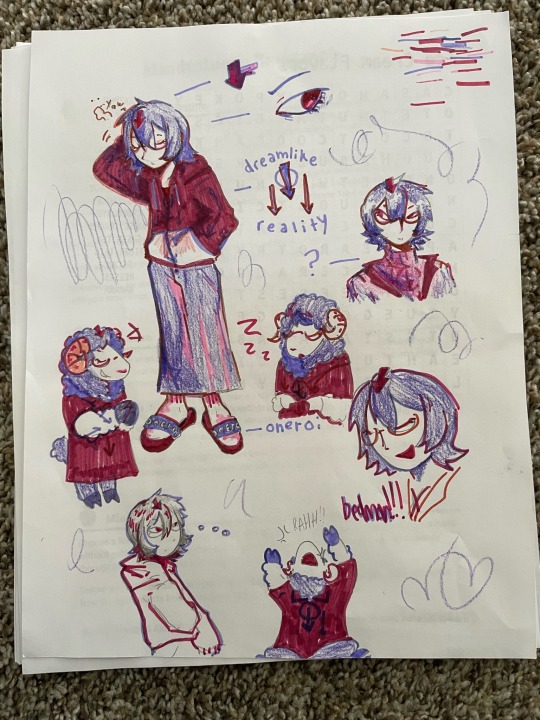





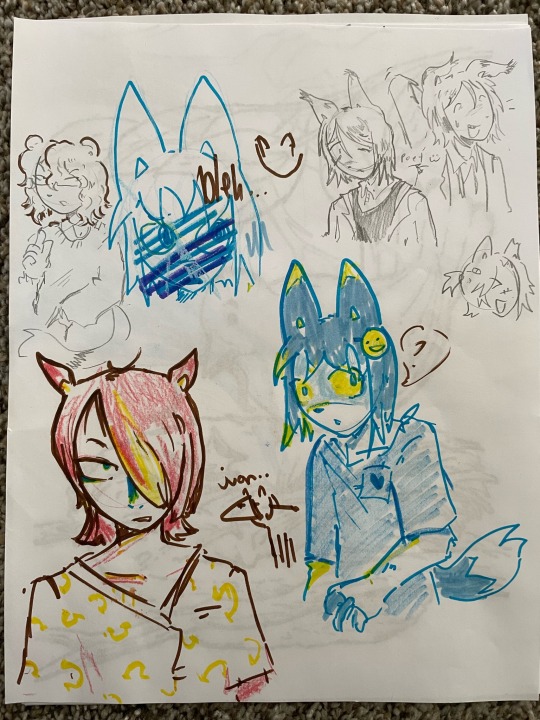


#my art#<- technically . some#(a lot)of this is from Delilah or codex#bedman#oc:lomin#oc:nurse#they were the first two I drew because I was scared & lomin is my hospital character i project onto for that fear#the orca is nalani kind of
15 notes
·
View notes
Text
SeaWorld Orca profile Nalani
5 notes
·
View notes
Text

I could just stop commenting for my sanity’s sake, but then how else would I get content about creepy uncle Keet?
#this is one of the ‘amazing… everything you just said was wrong’ posts#kayla rejected halyn#a common occurrence for first time mothers#animals don’t commit suicide. that’s anthropomorphism babe.#and yes taku did impregnate katina. which is yuck but inbreeding is a frequent occurrence in wild cetas#and amazingly enough nalani is seemingly quite healthy#she’s already older than taku was 😞#also can we stop using racist john hargrove as a source?#the man is a dumpster fire#seaworld#miami seaquarium#orcas#killer whales#keet#katina#halyn#nalani#kayla#hugo#language
9 notes
·
View notes
Text
Random fact tidbit about me: All my wolves in WolfQuest are named after orcas at SeaWorld.
#i went to seaworld once as a cub#since then i have heard very negative reviews about the place and how they treat their animals#i wish i hadn’t gone after that but i was just a cub and didn’t know any better#and neither did my parents because marine animal welfare is kind of a niche subject#so yeah i have wolves with names like ‘Tilikum’ ‘Nalani’ ‘Unna’ ‘Kyuquot’#most of the orcas whose names i used have passed on#there was even an orca named lolita but i don’t want to name one of my wolves that due to the connotation#her name used to be tokitae so i might use that#she’s still alive actually#she’s 56. orcas can live to be really old#even though the ‘animals live longer in captivity’ rule is the opposite for marine mammals#orca hyperfixation? now? oh god please no-
1 note
·
View note
Text
SeaWorld's captive-born orcas
I decided to compile a list of all SeaWorld's captive-born orcas, from Kalina, the very first Baby Shamu, in 1985 to Kyara, the final calf produced by the breeding program, in 2017. As in my previous post on life expectancy, spontaneous abortions and stillbirths are not included as they skew live birth data, and there is no accurate information on their frequency in free-ranging populations. Whales that are still alive at the time of this post (June 2023) are bolded. Whales that died prior to weaning age (3 years) are italicized (this is colloquially when a birth is considered "successful").
Kalina (F) b. 1985, age at death - 25 years
Baby Shamu 2 (F) b. 1986, age at death - 12 days
Orkid (F) b. 1988, age - 34 years
Katerina (F) b. 1988, age at death - 10 years
Kayla (F) b. 1988, age at death - 30 years
Taima (F) b. 1989, age at death - 20 years
Takara (F) b. 1991, age - 31 years
Keet (M), b. 1993, age - 30 years
Taku (M) b. 1993, age at death - 14 years
Nyar (F) b. 1993, age at death - 2 years
Keto (M) b. 1995, age - 27 years (lives at Loro Parque)
Unna (F) b. 1996, age at death - 18 years
Sumar (M) b. 1998, age at death - 12 years
Tuar (M) b. 1999, age - 23 years
Tekoa (M) b. 2000, age - 22 years (lives at Loro Parque)
Nakai (M) b. 2001, age at death - 20 years
Kohana (F) b. 2002, age at death - 20 years (died at Loro Parque)
Ikaika (M) b. 2002, age - 20 years
Skyla (F) b. 2004, age at death - 17 years (died at Loro Parque)
Kalia (F) b. 2004, age - 18 years
Halyn (F), b. 2005, age at death - 2 years
Trua (M) b. 2005, age - 17 years
Nalani (F) b. 2006, age - 16 years
Malia (F) b. 2007, age - 16 years
Sakari (F) b. 2010, age - 13 years
Makaio (M) b. 2010, age - 12 years
Makani (M) b. 2013, age - 10 years
Kamea (F) b. 2013, age - 9 years
Amaya (F) b. 2014, age at death - 6 years
Kyara (F) b. 2017, age at death - 3 months
In the 32 years SeaWorld's breeding program was running, 30 live calves were born. Of that 30, 15 are still alive today, for an overall "success rate" of 50%. 9 (60%) of that 15 were born during the second half (2001-2017) of the program's existence.
Of the 30, 28 (93%) survived their first year, the time period during which the majority of wild mortalities occur. 26 (87%) survived to weaning age. When removing the whales who died before weaning age, overall survivorship to present day is 57%, and survivorship to present day for the second half of the time period is 69%.
Excluding these whales who died before weaning, the survival data is:
Born 1985-1989: 20% still living (one whale: 34 years)
Born 1990-1999: 57% still living (age range: 23-31 years)
Born 2000-2009: 67% still living (age range: 16-22 years)
Born 2010-2017: 75% still living (age range: 9-13 years)
Average age at death of all deceased whales: 17 years
Average age of all living whales (as of June 2023): 20 years
Of course, true survivalship cannot be accurately determined until many years from now, when all of them have passed away. But it is evident that during the 32 years of the breeding program's existence, husbandry and veterinary care drastically improved, a fact reflected in the survivalship data. I expect that, had the program not been cut off, we would have seen the current trend continue... survival rates steadily increasing, and whales living longer lives. In conclusion, it's unfair and inaccuate to state that SeaWorld's killer whale breeding program was a failure, or that it produced only sickly calves that died young.
Fun fact: Keet, SeaWorld's first* male calf, is currently 30 years old, the average life expectancy of a wild male! May there be many more birthdays ahead of him!
*Kyuquot is SeaWorld's oldest living captive-born male at 31 years, but he is not included in this list as he was born at Sealand of the Pacific and moved to SeaWorld when he was 1 year old.
25 notes
·
View notes
Note
Hunter: that orca is scary
Nalani and Malia: *looking at him with a creepy stare* So are we…
103 notes
·
View notes
Text
The Orlando pod did not express much interest in participating in the noon orca encounter today. You know what still happened right in front of our collective eyes? They were fed and given positive reinforcement. Nalani and Malia were the only ones that wanted to be out in the show pen and everyone was chill and understanding that it wasn’t the usual routine.
The “forced to do tricks” rhetoric is so shamefully wrong and oh so tiring.
8 notes
·
View notes
Text





This is currently the Whale wall! I aim to draw all killer whales that were born at and died at Seaworld Orlando!
Currently I have Katina, Trua, Makaio, and Nalani hung up, Tilikum has yet to be hung up since I'm using him to try and do the size of the orcas correctly.
#grims art#shamu#seaworld#seaworld orlando#orca#orcas#killer whale#killer whales#cetacean#cetaceans#whale#whales#dolphin#dolphins#art#artists on tumblr#drawing#my art#artistic#artist#artwork#traditional art#tradtional drawing#drawdaily#my draws#drawings#marine animals#marine core#marine mammals#marine life
5 notes
·
View notes
Video
...
Orca Encounter @ SeaWorld Orlando
Gladiator orcas named as Kayla, Katina, Tilikum, Trua, Nalani, Malia & Makaio.
#And someday we'll look back and say it was fun#seaworld orlando#shamu stadium#orca encounter#killer whales#conservation#orca#whale#seaworld#orlando#florida
2 notes
·
View notes
Text




Nalani my beloved
#nalani#nalani orca#orca#killer whale#seaworld#seaworld orlando#marine biology#dolphin#marine life#cetacean#animal photography#marine animal photography
48 notes
·
View notes
Text

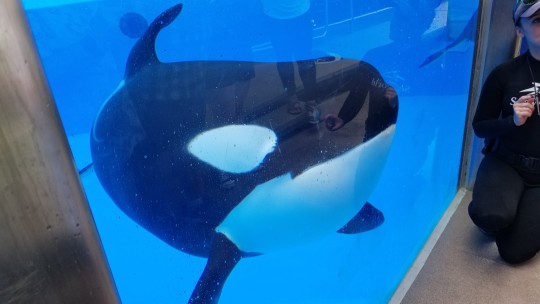

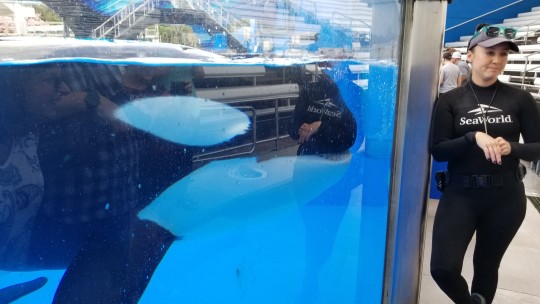
Nalani during my second Killer Whale up close. Such a sweet and beautiful girl.
19 notes
·
View notes
Photo

aaand another one, turn for the Orlando pod!
Tilikum in the middle; clockwise from the bottom is Malia, Trua, Kayla, Katina, Makaio & Nalani
#seaworld#seaworld orlando#orca#killer whale#tilikum#malia#trua#kayla#katina#makaio#nalani#Captive orcas#my art
41 notes
·
View notes
Photo

I keep forgetting that I can post on this blog.
-- Mod Tilikum
3 notes
·
View notes
Note
(Asking as someone genuinely wanting to learn)
I saw the GIF's you shared with the orcas and noticed floppy dorsal fins - is this normal in captive orcas? And do you know what causes it?
Hope this is okay! Your blog has opened my eyes to a lot of stuff to do with captive cetaceans which I really appreciate! :) 🐳
Hello! Thank you for your kind words!
As for floppy dorsal fins... in short, we don't know for sure! Bent and collapsed dorsals do occur in the wild, although at an exponentially lower rate than in captivity. While this often appears linked to animals in poor health, many floppy-finned individuals live normal lifespans.

Meanwhile, in human care, 100% of adult males and some females have at least some level of dorsal fin collapse.

The most popular theory is that collapsed fins have to do with water pressure. Cetacean dorsal fins do not contain bone, but rather are made entirely of a dense yet pliable connective tissue called collagen. Wild orcas spend most of their time swimming and diving for food. Because so much of their time is spent under the surface, the water pressure supports their dorsals and allows the collagen to strengthen. In managed environments, however, orcas spend a lot more time at the surface, interacting with their care staff. Without the constant water pressure, the collagen fibers do not fully harden and eventually the fin collapses under its own weight.
There is anecdotal evidence that surface-hunting populations of wild orcas (for example, those that feed on sharks) have a higher rate of dorsal collapse than others (I have not found the proper source for this yet, so take it with a grain of salt). This might also may explain why so many sick individuals experience collapse—they float at the surface rather than diving to hunt, allowing their collagen to weaken. This also works in tandem with the theory that warmer temperatures encourage the collagen to soften, since it's typically significantly warmer above the surface.
Genetics also appear to play some role in dorsal fin collapse. Katina, the 46-year-old matriarch of the SeaWorld Orlando pod, and her 15-year-old daughter Nalani (pictured below) both have noticably bent dorsals, particularly for females.
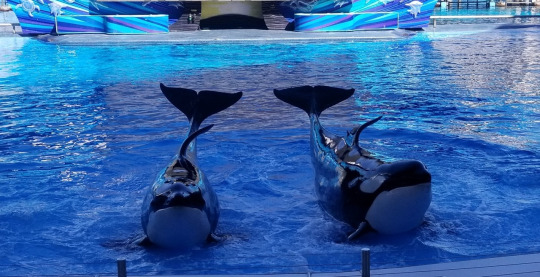
(Image credit to @girlwiththeorcatattoo)
Meanwhile, Kasatka, the late matriach of the San Diego pod, and her daughters and granddaughters all have much straighter fins, despite living in an essentially identical environment. Interestingly, Kasatka's son Nakai (pictured below in 2015), had the straightest dorsal fin of any captive male for nearly 20 years before it finally flopped over.
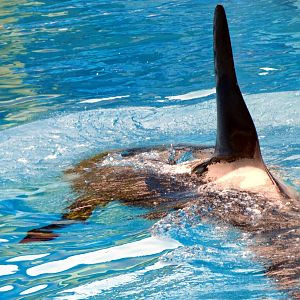
There are other orcas that confound our understanding of collapse. Corky and Orkid (pictured below), 57 and 33 years old respectively, both have lovely, tall, perfectly straight dorsals, despite Corky spending years in an extremely undersized tank at Marineland of the Pacific before transferring to SeaWorld San Diego in the 1980s.

Ulises (pictured below), who at a whopping 44 years old is the oldest male orca in human care, has only a flopped tip rather than a completely collapsed fin.

Even Tokitae (pictured below), who has spent over 50 years in a far-too-small tank at Miami Seaquarium, has an almost completely straight dorsal.

I summary, we really don't know for sure. What we do know is collapsed dorsal fins do not seem to have a negative impact on their health, and that it is absolutely not the result of "depression" or mistreatment, as is often touted in activist circles. Emotions definitely don't affect collagen!
I hope this is helpful! Thank you for asking!
#orcas#killer whales#cetaceans#marine mammals#collapsed dorsal fins#zoology#seaworld#katina#nalani#corky ii#orkid#nakai#ulises#tokitae#trua#makaio#answered asks#anonymous
238 notes
·
View notes